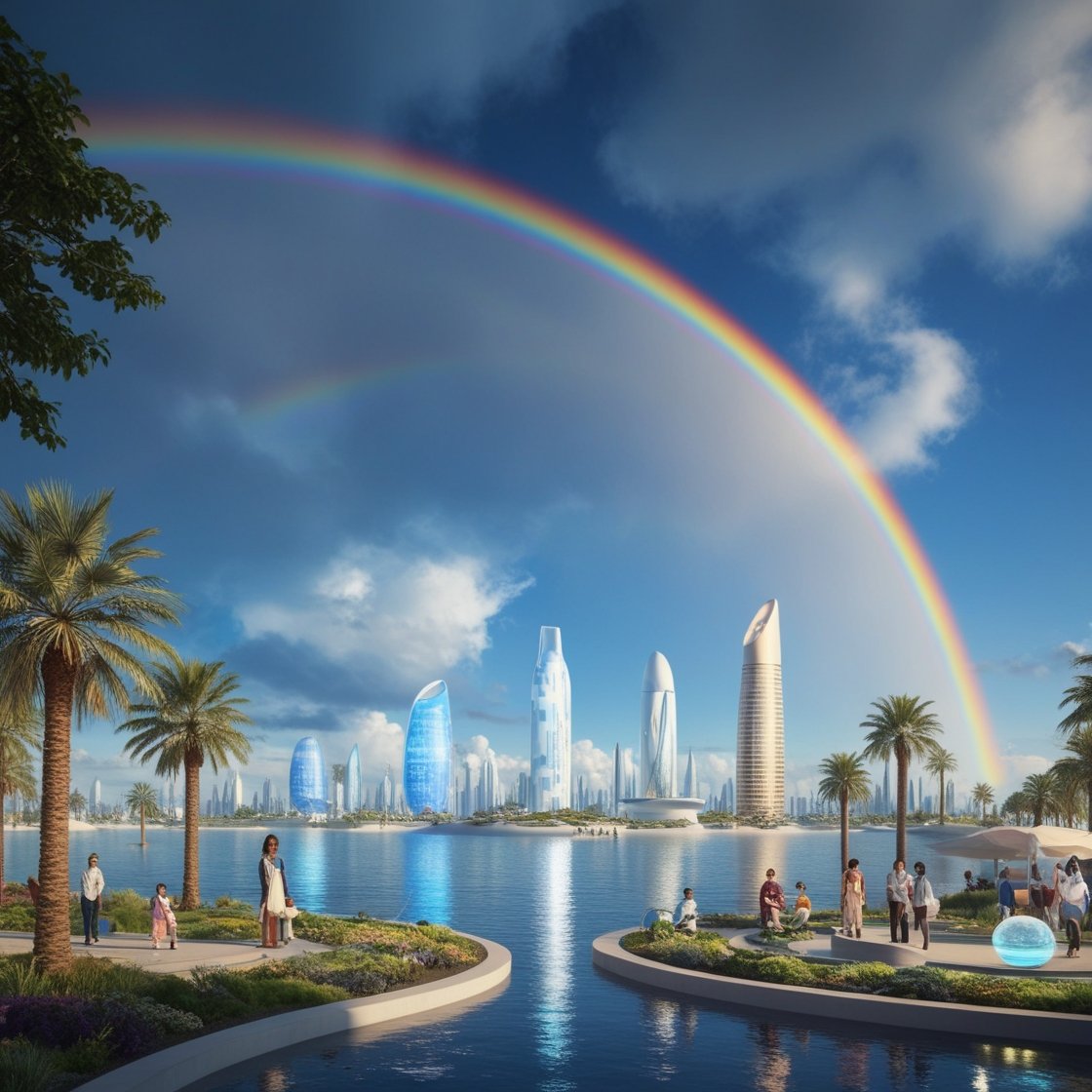
Imaginary Planets
Imaginary planets have long captivated human imagination, serving as a testament to our intrinsic desire to explore the unknown and ponder the possibilities beyond our immediate reality. These hypothetical worlds, brought to life through literature, movies, and scientific discourse, offer a unique platform for both creative expression and speculative science. In the realm of fiction, these planets allow authors and filmmakers to construct complex ecosystems, societies, and narratives that challenge our understanding of life, culture, and the universe itself.
The fascination with imaginary planets can be traced back to ancient mythologies, where celestial bodies were often depicted as realms inhabited by gods, monsters, and heroes. Over time, this imaginative tradition has evolved, influencing modern science fiction and fantasy genres. Works such as H.G. Wells’s “The War of the Worlds,” Frank Herbert’s “Dune,” and James Cameron’s “Avatar” have each presented unique, detailed visions of otherworldly environments that provoke both wonder and introspection.
From a scientific perspective, the creation of imaginary planets often serves as a thought experiment, allowing scientists and researchers to explore theoretical scenarios and contemplate the variables that define planetary habitability. The study of exoplanets—planets orbiting stars outside our solar system—has particularly benefited from this imaginative approach. By conceptualizing diverse planetary conditions, scientists can better understand the range of possibilities for life beyond Earth and refine their search for extraterrestrial beings.




Imaginative thinking extends beyond the confines of fiction; it plays a crucial role in scientific advancements. The conjectures and hypotheses born from the contemplation of imaginary planets inspire technological innovations and drive scientific inquiry. For instance, the theoretical concepts embedded in these hypothetical worlds often lead to the development of new models and simulations, enhancing our comprehension of planetary formation, climate, and potential life-supporting systems.
Ultimately, the allure of imaginary planets lies in their ability to stretch the boundaries of our cognition and inspire us to envision a cosmos brimming with untapped potential. They invite us to dream, speculate, and, most importantly, push the frontiers of our knowledge and creativity.




Historical Perspectives: Imaginary Planets in Mythology and Early Literature
Throughout history, the human imagination has often ventured beyond the confines of our own planet, resulting in the creation of a myriad of imaginary worlds. Ancient mythology and early literature frequently feature these fantastical planets, offering not only entertainment but also profound reflections on human nature and the cosmos. Various cultures have contributed to this rich tradition, each with its unique vision of planetary realms.
In ancient Greek mythology, the concept of otherworldly realms was prevalent. For example, Olympus was often perceived almost as a separate planetary entity, housing the gods in a celestial commune far removed from mortal reaches. Similarly, Norse mythology spoke of Asgard, a realm among the Nine Worlds connected via Bifrost, the rainbow bridge, presenting another form of an imaginary planet that provided a framework for understanding the cosmos.


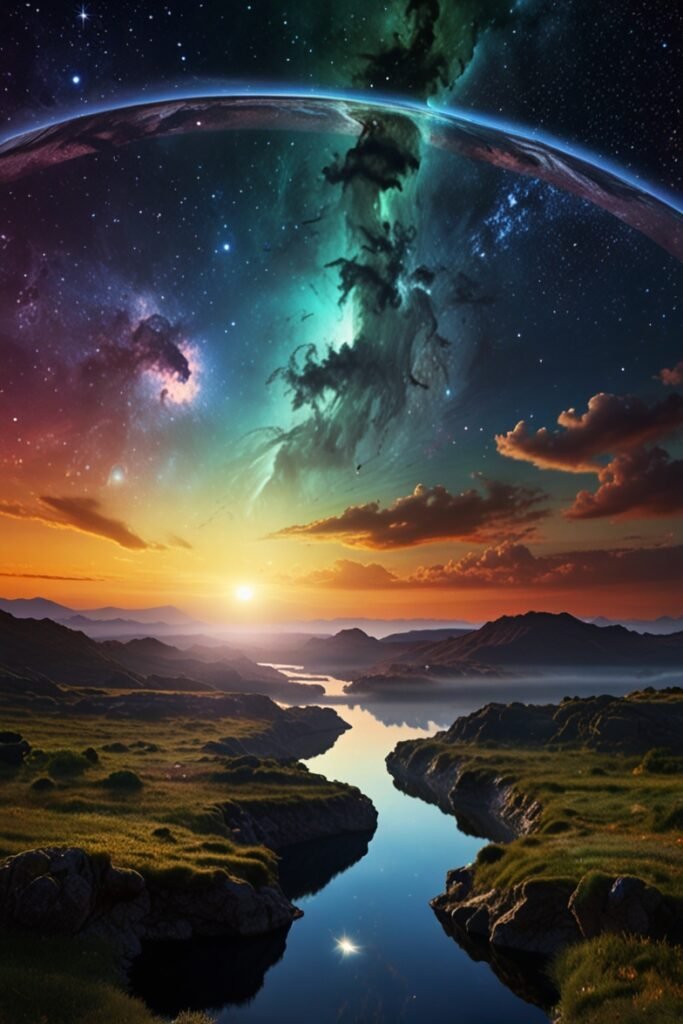

Early literature further expanded these ideas, with works such as Lucian’s “True History,” written in the 2nd century AD, often cited as one of the first examples of science fiction. Lucian described voyages to the moon and Venus, depicting societies and creatures that inhabited these celestial bodies. Although fantastical, these stories spurred readers to ponder the possibilities of life beyond Earth, nudging humanity incrementally toward scientific inquiry and exploration.
In the Middle Ages, Dante Alighieri’s “The Divine Comedy” explored the heavens in a more allegorical manner. His visionary journey through Hell, Purgatory, and Heaven was intertwined with medieval cosmology, suggesting imaginary planets within various celestial spheres. Such literary works not only entertained but also provided speculative landscapes that influenced later astronomical thought and curiosity.
These historical perspectives on imaginary planets have left an indelible mark on human culture. They function as a testament to our enduring fascination with otherworldly realms and serve as a precursor to modern scientific endeavors. By envisioning planets beyond our own, ancient myths and early literature laid the groundwork for contemporary explorations of the cosmos, fueling both creativity and scientific discovery.
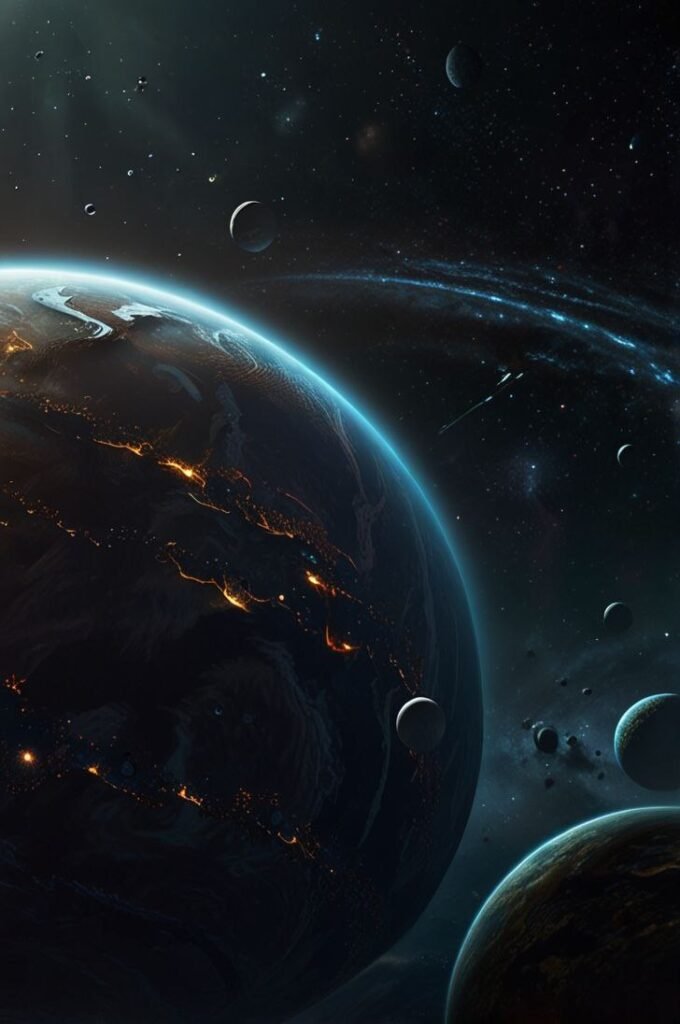



Imaginary Planets in Modern Science Fiction
Imaginary planets have long served as the backbone of modern science fiction literature and media, providing a canvas on which authors and creators paint innovative and thought-provoking scenarios. These celestial bodies, conjured from the minds of their creators, not only add depth and complexity to storytelling but also invoke contemplation of our own universe. Through their imaginative construction, these planets facilitate explorations of societal, environmental, and philosophical themes.
In literature, notable examples of imaginary planets abound. Frank Herbert’s Dune series introduces readers to Arrakis, a desert planet with a complex ecosystem and political structure revolving around the precious spice, melange. Similarly, Arthur C. Clarke’s Rama series presents a mysterious cylindrical alien spaceship on a cosmic voyage that challenges humanity’s understanding of extraterrestrial life. These imagined worlds are meticulously crafted, each with its own distinct culture, environment, and history, which often mirror or critique real-world issues.

In the realm of movies and television, imaginary planets continue to captivate audiences. James Cameron’s Avatar transports viewers to Pandora, a lush, vibrant extraterrestrial moon plagued by the conflict between indigenous populations and human colonizers. This vivid portrayal emphasizes the themes of environmentalism and colonialism, resonating with contemporary discussions. Meanwhile, the Star Wars franchise boasts a multitude of iconic planets such as Tatooine, Hoth, and Coruscant, each serving as a critical backdrop for epic narratives and character development.
The significance of imaginary planets extends beyond mere settings; they shape the genre and influence popular culture deeply. By pushing the boundaries of creativity, they challenge audiences to reconsider the constructs of life and society. In provoking such reflection, imaginary planets continue to be a pivotal element of science fiction, sustaining its relevance and expanding its horizons.




The Role of Imaginary Planets in Scientific Research
The concept of imaginary planets holds a remarkably influential place in scientific research, particularly in the domains of astronomy and astrobiology. Imaginary planets serve as a fertile ground for hypothesizing about exoplanets, extraterrestrial life, and the potential for habitable worlds beyond our solar system. They act as a canvas upon which scientists can project their theories, fostering innovative thinking and facilitating the development of new methodologies for exploring the cosmos.




In the vast expanse of the universe, discovering new planets that mirror the traits of our imaginary constructs can be thrilling. These imaginative scenarios push astronomers to utilize cutting-edge technologies, such as space telescopes and spectral analysis, to seek out and verify the existence of exoplanets harboring similar conditions. By envisioning these fictional worlds, researchers can better focus their search criteria, highlight key indicators of life, and refine their understanding of planetary systems.


A notable example is the way scientists model climates and atmospheres of hypothetical planets to predict potential signs of life. For instance, examining a speculative world with an ammonia-rich atmosphere forces researchers to reconsider their existing paradigms about what constitutes a “habitable zone.” These imaginative exercises often lead to groundbreaking insights, expanding our comprehension of biological adaptability and ecological viability in diverse environments.




Moreover, the study of imaginary planets extends to the philosophical and ethical implications of encountering extraterrestrial life. Researchers engage with these hypothetical scenarios to prepare for the eventualities of finding life forms that might drastically differ from those on Earth. This imaginative exercise aids in framing protocols and guidelines for future interplanetary missions, ensuring a responsible approach to potential discoveries.
In essence, imaginary planets are not just flights of fancy but are integral to enhancing our scientific assumptions and expanding the horizons of our cosmic explorations. Through the lens of imagination, these speculative worlds equip scientists with invaluable tools to navigate the uncharted territories of the universe. Such imaginative endeavors form a crucial bedrock for the relentless quest to unlock the mysteries of the cosmos, propelling scientific research into realms previously thought unattainable.



Creating Your Own Imaginary Planet: A Guide
Designing an imaginary planet provides a captivating fusion of creativity and science. To create a world that captivates, start by considering its foundational elements: climate, geography, and ecology. These three aspects are interwoven, shaping the planet’s potential for supporting varied life forms.
Climate forms the bedrock of your planetary creation. Decide on the intensity and distribution of the sun’s radiation. Is the planet in the habitable zone of its star, or does it lie closer to the extremes? Temperature variations will influence weather patterns, seasonal changes, and biomes. Think about atmospheric composition: does the planet have the right mix of gases to support life as we know it, or does it harbor exotic atmospheres requiring unique adaptations from its denizens?



Next, focus on geography. The layout of continents, oceans, and mountain ranges profoundly impacts the climate and the evolution of life forms. Consider plate tectonics and the geological activity that shapes the landscape over millennia. The presence of distinctive features like vast deserts, lush rainforests, and sprawling icecaps each introduce unique ecological niches and resources.
Now, delve into ecology. With a robust understanding of the planet’s climate and geography, craft ecosystems that logically flourish in the given conditions. Conceptualize plant and animal life that might evolve under these circumstances. What adaptations would be beneficial? Think about food chains and symbiotic relationships that underscore a balanced ecosystem. Diversity in flora and fauna enriches the narrative, making the planet teeming with intriguing life forms.
Consistency and scientific plausibility are paramount. Readers are often drawn to worlds that, while imaginative, adhere to a set of logical rules. This doesn’t mean eliminating creativity; instead, it involves anchoring imaginative elements in believable science. Building a detailed planetary model can enhance storylines, whether for literary endeavors or tabletop role-playing games, ensuring an immersive and coherent experience.



Imaginary Planets in Gaming
The realm of video games has always been a fertile ground for imagination and creativity, particularly when it comes to the concept of imaginary planets. These digital worlds serve as immersive backdrops for interactive storytelling, drawing players into unique experiences far removed from Earthly constraints. Game designers often craft these planets with meticulous detail, blending elements of science fiction and fantasy to create rich, believable ecosystems and cultures.
One prime example is the “Mass Effect” series, where players traverse a galaxy teeming with diverse, meticulously designed planets. Each planet in “Mass Effect” offers unique landscapes, alien species, and cultural lore that enhance the narrative depth and complexity of the game. Another notable example is the game “No Man’s Sky,” which delivers a procedurally generated universe containing 18 quintillion planets. This approach ensures that each player’s experience is distinct, making exploration endlessly compelling.
Designing imaginary planets in video games is not merely about visual aesthetics; it integrates crucial storytelling elements. Planets often symbolize thematic aspects of the game, reflecting the lore, politics, and challenges that players must navigate. For instance, the planet Pandora in “Borderlands” is an untamed, hostile territory filled with dangers that mirror the game’s overarching narrative of survival and treasure hunting. Similarly, the vibrant, bioluminescent world of “Planet 4546B” in “Subnautica” complements the story’s focus on underwater exploration and survival.
In interactive media, imaginary planets are more than just settings; they are integral to the gaming experience, shaping gameplay mechanics and player interactions. The meticulous design of these planets, from their topography to their inhabitant’s behaviors, contributes to the overall immersion. Therefore, the creation of imaginary planets in video games is a testament to the collaborative effort of artists, writers, and designers who build these pixelated worlds, ensuring they are vivid and enchanting realms for players to explore.




The Impact of Imaginary Planets on Environmental Awareness
Imaginary planets serve as powerful tools for raising awareness about environmental challenges faced on Earth. Through the creative lens of fictional worlds, writers and creators can explore complex environmental issues in ways that are both engaging and thought-provoking. By presenting exaggerated or alternate versions of planetary ecosystems, they encourage audiences to reflect on the dire consequences of negligence towards sustainability and conservation.
Fictional worlds often mirror real-world concerns, allowing readers and viewers to draw parallels between the imagined and the actual. For instance, a planet suffering from severe pollution, resource depletion, or climate catastrophes can stimulate audience introspection on Earth’s similar predicaments. The emotional resonance generated by imaginary planets can lead to a deeper understanding of environmental issues and motivate individuals to advocate for change.
Moreover, creators use these fantastical settings to introduce innovative solutions to environmental problems. Imaginary planets frequently feature advanced technologies and ecological practices that are not yet feasible on Earth. By showcasing such possibilities, these narratives inspire hope and open up new avenues for thinking about sustainability. They push the boundaries of what is considered achievable, often leading to a broader acceptance of avant-garde ideas in environmental science and engineering.




Notably, the imaginative portrayal of futuristic or alien ecosystems can also imbue a sense of wonder and responsibility. Audiences are often left contemplating the beauty and fragility of these fictional worlds, fostering a greater appreciation for the natural environments here on Earth. This emotional connection can be a powerful catalyst for real-world environmental action, as engaged readers and viewers are more likely to support or participate in conservation efforts.
In conclusion, the use of imaginary planets in literature and media serves as an effective method for raising environmental awareness. Through imaginative stories, creators are able to depict the urgency of ecological issues while also imparting valuable lessons on sustainability and conservation.
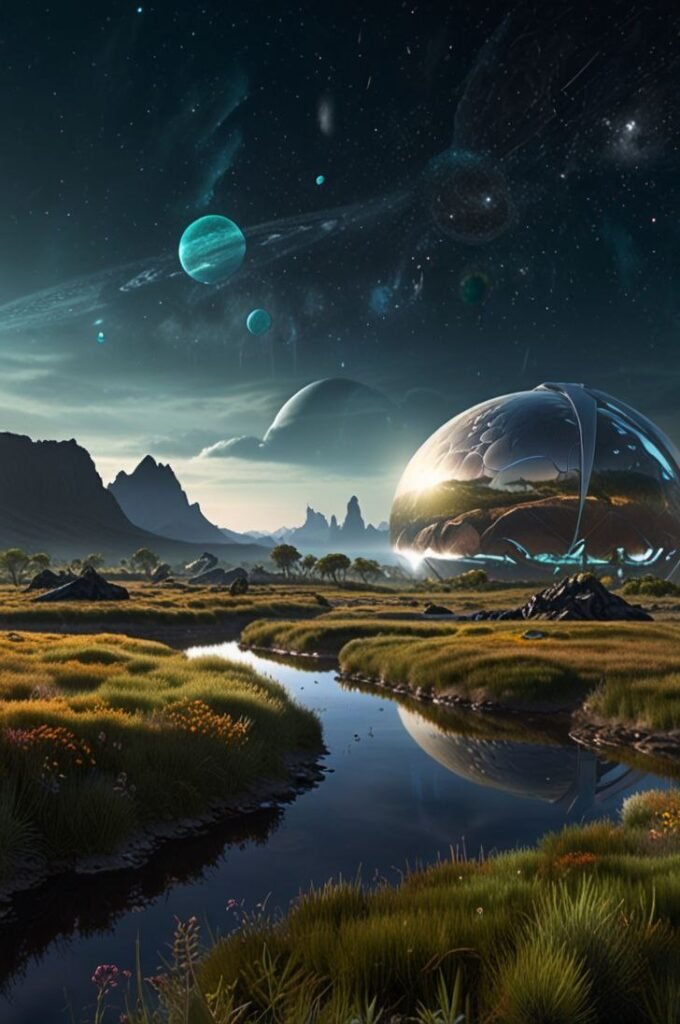

Conclusion: The Future of Imaginary Planets
The concept of imaginary planets has captivated the human mind for centuries, intertwining the realms of fiction and science. As we move forward, the future of these fantastical worlds seems more dynamic and vibrant than ever, thanks to significant advancements in technology and a continually evolving relationship between imagination and scientific discovery.
Emerging trends in virtual reality (VR) and artificial intelligence (AI) are set to revolutionize how we create and explore imaginary planets. VR, with its immersive capabilities, offers a unique opportunity for individuals to step into detailed, lifelike planets crafted by imaginative minds. This technology enables users to experience these worlds firsthand, engaging with the environment and its inhabitants in ways previously unimaginable. On the other hand, AI enhances the complexity and realism of these planets. AI-generated environments can evolve, adapt, and offer unique interactions, making the experience of exploring imaginary planets richer and more engaging.
Moreover, the fusion of imagination with scientific discovery continues to broaden our horizons. Scientific research often draws inspiration from fictional depictions of otherworldly places, pushing the boundaries of what is considered possible. Imaginary planets serve as a sandbox for scientists and explorers to toy with theories and models, which can sometimes translate into real-world advancements. For instance, the study of exotic atmospheres and landscapes in fiction can stimulate new ideas in the scientific community, leading to innovative hypotheses and exploratory missions.
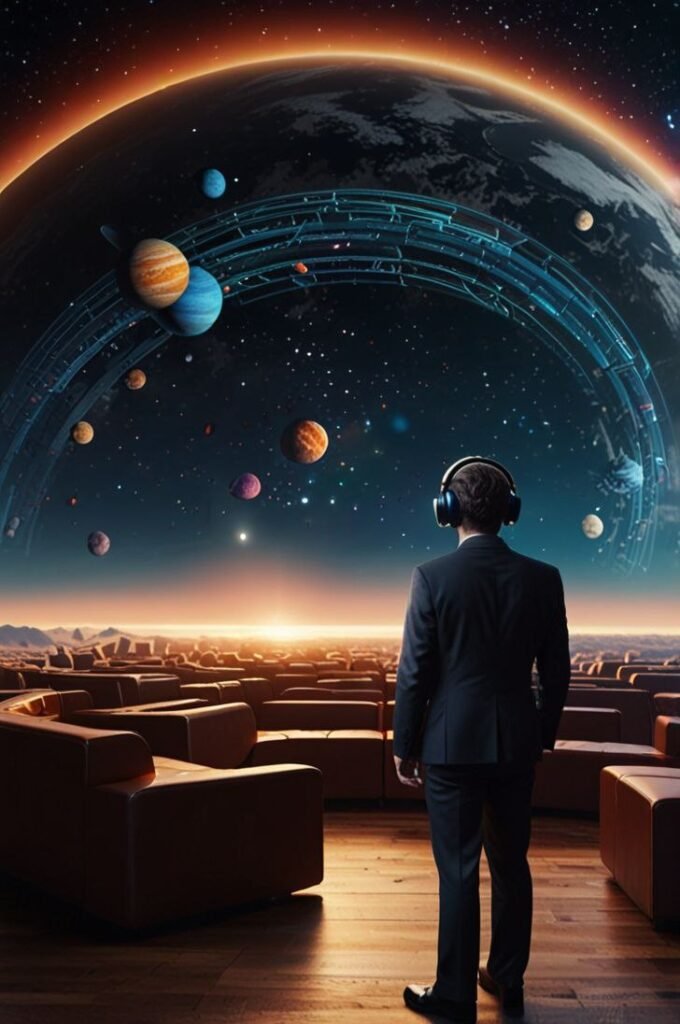

The future of imaginary planets is undeniably promising, as it balances on the precipice of human creativity and scientific exploration. The advancements in VR and AI will transform how we interact with and understand these worlds, making them an integral part of both entertainment and scientific endeavors. As we continue to traverse this fascinating interplay between imagination and reality, imaginary planets will undoubtedly remain a pivotal aspect of our quest to understand the universe and our place within it




Balance between nature and the universe
The image shows a stunning artistic scene that combines elements of reality and fantasy. In the foreground, we see a vast field of bright green grass, adorned with bright red flowers scattered among the delicate strands of grass.
This natural scene gives a sense of tranquility and beauty. But what makes this image unique is the enchanting background. On the horizon, planet Earth appears in full view, suspended in outer space. The planet is surrounded by a night sky full of sparkling stars, and the sun appears to rise from behind it, creating a striking contrast between darkness and light.








































RELATED POSTS
View all
